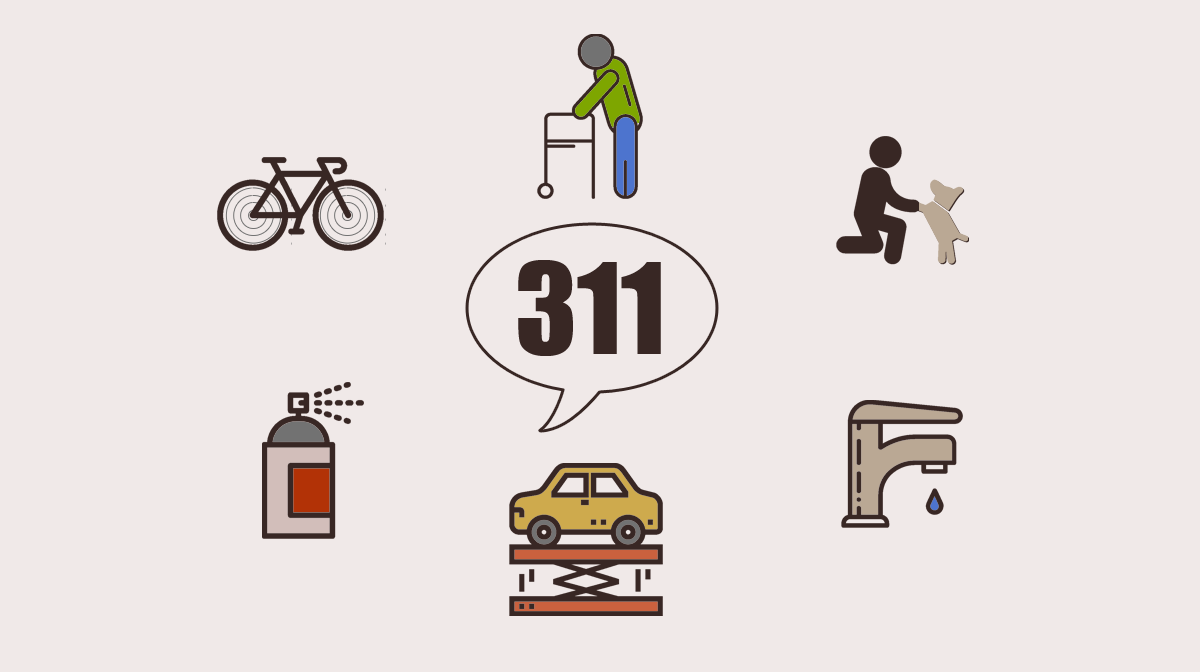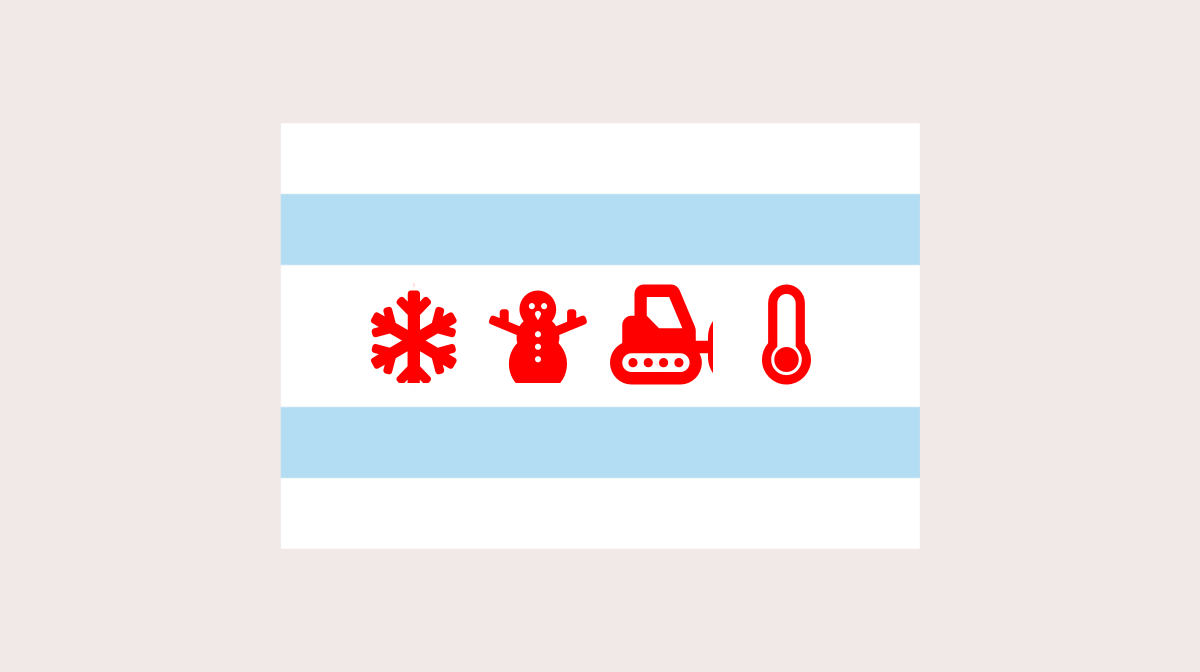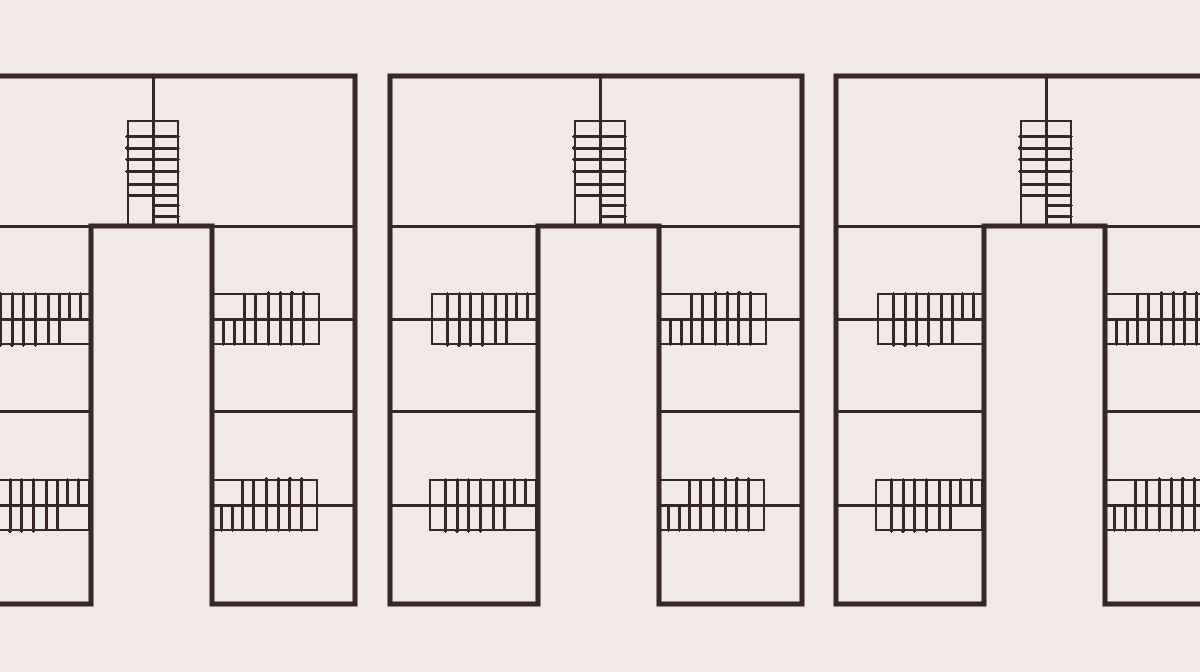For the past two articles I've been looking at Chicago's 311 non-emergency service hotline data from the past year with a focus on snow removal complaints. But that is only one of 96 separate categories used by 311 to sort the many calls they receive in a year. Today I pulled a list of all of the complaints from December 6, 2018 through December 6, 2019. I then grouped them by rough umbrella categories and added up the calls within each category to see the types of things that will spur Chicago residents to pick up the phone (or open an app) and file a complaint with the city. Continue reading Complaints, Campaigns and Conspicuous Flaws: Chicago’s 311 Calls by Category
Author: Kay Cleaves
Mapping 311, Part 2: Chicago’s Worst Shoveling Scofflaws
There's a part two! Of course there's a part two. I wouldn't crack open a resource like the one I used last week and just dip a toe in. If I'm going in, I'm going for the deep dive.
Returning readers will know that last week I did a trial run of some new mapping software to plot out snow removal complaints received by Chicago's 311 non-emergency reporting service since the start of October. But the available information in the source I used actually goes back to December 18, 2018. Now that I am more comfortable with using Leaflet it's time to dig a little deeper through that data.
Single reports across two snowstorms are great and interesting but with a full year of data we can look for trouble spots that pop up over and over. After all, missing one snowstorm worth of shoveling isn't all that bad. We've all done it now and then. But failing to shovel for an entire winter is just plain rude.
It's time to find out which of those reports should actually be points of concern for renters and buyers looking to move to a new area of the city. Today we'll be culling through the reports in the portal to find the real snow shoveling scofflaws. Continue reading Mapping 311, Part 2: Chicago’s Worst Shoveling Scofflaws
Published by
Mapping Chicago’s Snow Removal Complaints
I have for many years been waiting for Chicago to make public their data on the complaints received by the 311 department about unshoveled sidewalks. They have finally granted my wish. Unfortunately the data has become available at a time when Google is shutting down their Fusion Tables service, so I had to learn how to use a new service to create the necessary map. Because of course there was going to be a map.
In this article I take a look at the data that has accrued since the start of this past October, meaning we have only two really big snowstorms worth of data to consider. Those two snowstorms yielded about 1200 complaints to 311. I think that is more than enough for now. Continue reading Mapping Chicago’s Snow Removal Complaints
Published by
10 Assumptions You Should Never Make About Your Landlord
The other night as I was driving in 32°F drizzle and leaving several car lengths of space between myself and the car ahead in case of black ice, I wondered for how many of the drivers around me it was the first time on wintry roads. It is a known tradition for Chicago drivers to leave approximately two inches of space between them and the car in front of them, but given the temperature and the condition of the unsalted roads it was surprising how many other drivers were cutting in front of me. In situations like this I often remember that I was taught by my parents in a different area of the country instead of by a traditional local driving school. I learned early on to never assume the other drivers around you know anything about how to drive. This is called defensive driving.
Of course, this led me to think a bit about defensive renting and the assumptions renters make about their landlords. Landlords are often just as faceless and unknown as the people in cars beside us on the road. All we can assume about them is that they exist because they're trying to get from point A to point B using a particular vehicle or, in the case of the landlord, a particular building. And just like with drivers, incorrect assumptions can lead to very uncomfortable situations further down the road. Today we're going to go over 10 common and potentially harmful assumptions that renters make about their landlords that may not be true. Continue reading 10 Assumptions You Should Never Make About Your Landlord
Published by
The Rise and Fall of Chicago’s Courtyard Apartment Buildings
If you've rented in Chicago for very long you've probably lived in a courtyard apartment building. If not, you've probably at least visited someone who lives in one. There's thousands of them all throughout the city, with the exception of the downtown areas which are dominated by skyscrapers. A standard "U"-shaped courtyard building is a three story tall walkup building with five entrances surrounding a central green space. Each entrance usually has six apartments, sometimes seven or eight if there's finished basement apartments.
In addition to the standard U shape, there's also half courtyards (shaped like an "L"), 1.5 courtyards (shaped like an "S" and usually on block corners) and double courtyards (shaped like a "W"), but they're all basically similar. These buildings are unique to the Chicago area and almost invariably about 100 years old.
Today we're going to explore the reason why we've got so many of them, and also why we don't see many new ones popping up in the 21st century landscape. Continue reading The Rise and Fall of Chicago’s Courtyard Apartment Buildings





